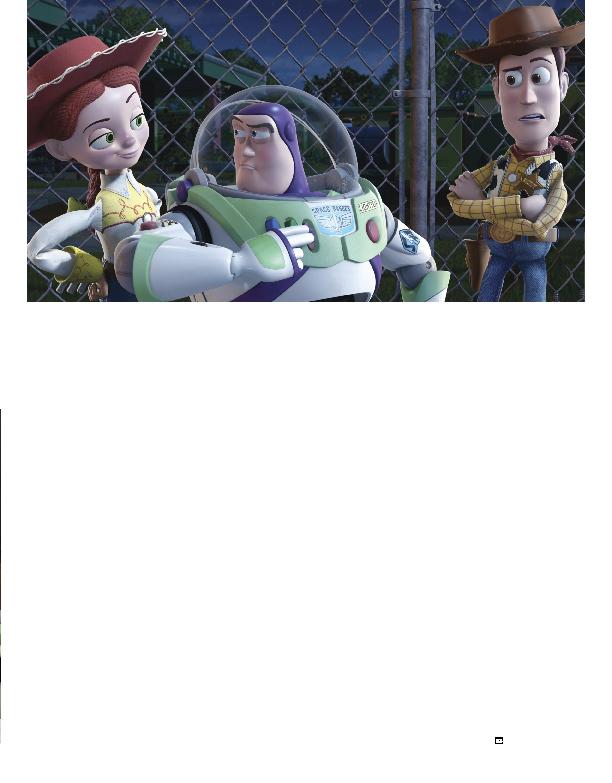
Brenda Chapman (whose Pixar debut The Bear
and the Bow will be released in 2011) and Pixar
sound designer-turned-director Gary Ryd-
strom, among others.
stages of completion; sometimes as an early
draft of the script or later on as rough versions
of animation with added dialogue called "reels."
Then notes were given, usually with amazing
results. Arndt doesn't mince words when de-
scribing his Brain Trust experiences, "As a
screenwriter, that's just f***ng heaven on earth!
ing on my own scripts and getting dribs and
drabs of feedback every couple of weeks. And
suddenly, it's like you're crawling through the
desert and one day you drill down and hit a
geyser. Sitting in on those Brain Trust meetings
have been some of the most exhilarating mo-
ments of my creative life."
people started talking, it was like the Harlem
Globetrotters in your living room." The collec-
tive minds present at such a meeting can cer-
tainly only improve on an idea. The common
protocol is for one member to throw out an
idea while another follows up with a comple-
tion or addition to the original thought. Jokes
are topped sometimes three times over. "The
organic intelligence in that room is automati-
cally higher than even the smartest person in
the room," Arndt says. "There are times when
super-intelligent invisible story deity that has
powers beyond that of any mere mortal."
Arndt's outlook on screenwriting changed
after seeing the unique collaboration offered
by Pixar. "When you look at the final product,
there's just no way I could have written that
screenplay on my own," he says humbly. "It's
just too narratively complex and too dense
with incident and humor. I worked really, re-
ally hard on Little Miss Sunshine -- I went to
the end of my abilities in writing that script.
But, purely formal terms, Toy Story 3 puts Little
Miss Sunshine in the shade. And that comes
from the fact that it's a collaborative process."
writers on staff. He also points out that even
the great auteurs he admired in film school --
Billy Wilder, Federico Fellini, Akira Kurosawa
-- had writers whom they regularly collabo-
rated with on their scripts. "Pixar was very, very
generous in giving me sole screenplay credit,"
Arndt continues. "But what's up on screen is
the product of a huge team effort. I was, very
happily, just another member of the team."
gives credit to for improving the screenplay
tremendously. "They were constantly adding
ideas and details into shaping the story," Arndt
says. "Everyone was given complete creative
the story. Once you make that shift -- once
you check your auteur/genius/visionary self-
image at the door -- the problem of ego goes
out the window.
the equation: the feedback you get prior to your
re-write. Pixar stories work because of the ro-
bustness of the story feedback system." Arndt
points to statements made by several key Pixar
staffers who admit that, at some point in the
process, every single film Pixar made was once
the worst thing one might ever see. "It's only
by making the movie as a `reel' seven or eight
times, and failing repeatedly, and by applying
the smartest and most ruthless criticism you
can to the story over and over again, that the
stories are able to take shape and come out feel-
ing coherent and complete," he says.
fans have long suspected: Pixar's films are such
rousing successes because of the attention each
individual at that studio dedicates to the
screenplays. "Andrew Stanton's rule of thumb
is that it takes 10 man-years of labor to make
a good screenplay," Arndt explains. "Either
two writers working five years or 10 guys work-
ing one year. For Toy Story 3, it was even more
than that -- probably the equivalent of 10
people each working two or three years.
"They realize how hard it is to come up with
a great screenplay."